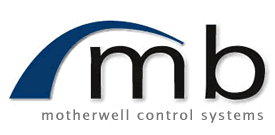
 |
|
Home / MB Inspection / Company Services / Site Inspection Services / Time of Flight Diffraction Time of Flight Diffraction (TOFD) Increasing use of risk based inspection (RBI) on chemical and refining plant places greater emphasis on the ability to accurately size and monitor pre-existing or growing in-service discontinuities. Originally developed for the Nuclear Industry, the TOFD technique is well suited to many process industry applications. In fact TOFD is an important tool for inspection of:
PRINCIPLE TOFD is performed using highly damped longitudinal wave transducers set in a pitch-catch mode. The probe assembly is traversed along the inspection area to screen the areas of concern. Data collection is rapid, ideal surfaces allow scan speeds up to 250mm/sec. When multiple channels are used, simultaneous data collection from multiple probe configurations is possible. The probe sets can be held in small callipers or larger scanning frames tailored to suit the application. By varying the transducer type, size, frequency, separation and number of scans the operator can “best fit” the system to the application. The data collected is encoded with surface distance to compile a composite A-scan grey scale image. Complex algorithms use the sound path timing variations to calculate the depth and cross-sectional size of any discontinuities and, are available to the operator within the TD- scan software.
|